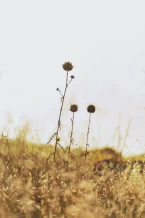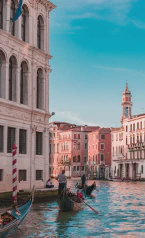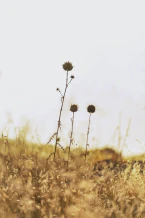Iceland: A Journey Through Natures Extraordinary Wonders

A Nordic Wonder: Iceland’s Breath-Taking Natural Attractions
If the land of ice and fire, Iceland, is not on your travel list, it should be. It’s a country boasting extraordinary landscapes and natural phenomena that leave you feeling both humbled and exhilarated. In this post, we delve into some of the most awe-inspiring sights this small yet mighty Nordic nation has to offer.
Kvitrkir: The Basaltic Pride of the Northwestern Coast
Just off the ring road on Iceland’s northwestern coast, you will find Kvitrkir, an astonishing rock formation, or basalt stack, that stands as a testament to the country’s volcanic history. Standing at approximately 50 feet high, this rock formation was once the plug of a volcano. Though naturally occurring, conservation efforts have ensured its preservation by securing its base with concrete. Aptly named Kvitrkir - which translates to ‘white shirt’ - the stack gets its moniker from the guano, or bird droppings, that adorn it, much like a snow-white shirt.
Kvitrkirkefetr: The Iconic Church Mountain
Further west near Grünteferir, you will discover Kvitrkirkefetr, Iceland’s most photographed mountain. Its name, which translates to ‘church mountain’ in Icelandic, becomes self-explanatory as you behold its awe-inspiring profile. Though the hike to the summit is recommended for experienced hikers or those accompanied by a guide, it’s the vista at night that truly mesmerizes. Imagine a backdrop of the aurora borealis or northern lights lighting up this remote, desolate mountain - a scene so ethereal that it was chosen as a filming location for Game of Thrones.
Reinesfjara Beach: A Black Sand Wonderland
In the southern coast of the island, about a two-hour drive from the nation’s capital Reykjavík, you’ll find Reinesfjara, renowned for its unique black sand beaches. Recognized by National Geographic in 1991 as one of the most exceptional non-tropical beaches on the planet, this stunning locale is easily accessible to tourists due to its proximity to Iceland’s Ringroad. And don’t miss out on the nearby Holohi, which exudes its own unique charm.
Githfos: Iceland’s Golden Waterfall
Iceland boasts many spectacular waterfalls, but the most frequented and arguably the most beautiful is Githfos, also known as the Golden Falls. Nestled within a canyon of the Kvita River in southwestern Iceland, this waterfall is a significant highlight of the Golden Circle, a popular tourist route encompassing some of the country’s most stunning sights. Its mesmerizing rainbows are a sight to behold and an excellent opportunity for photography enthusiasts. Regardless of the season, Githfos remains an unmissable attraction.
Landmanalugr: A Geothermal Wonderland
Tucked away in the Fjallabak Nature Reserve in the Icelandic Highlands is the enchanting Landmanalugr. A geothermal hot spring area boasting surreal landscapes, Landmanalugr, translating to ’the people’s pools’, is slightly remote but absolutely worth the journey. The mountainsides’ vibrant color palette, courtesy of the volcanic rock Riolite, presents a visual feast that’s second to none.
Jokursalan: The Icy Spectacle
Venture into southeastern Iceland, where the Breo-Marco-Yukwik Glacier crafts a spectacular lagoon filled with massive, shape-shifting ice chunks. Each piece of ice reflects a unique color, creating a mesmerizing visual effect
Jokursalan: The Icy Spectacle (Continued)
The captivating allure of Jokursalan doesn’t stop at the icy shoreline; boat tours offer a heart-stopping plunge into the center of the action, where you can appreciate the ice formations up close. Depending on the season, you might even spot some seals. Being a part of the Vachna Jokvik National Park, the lagoon is but a piece of a broader and even more spectacular whole.
Seljalansfoss: The Waterfall With a Behind-the-Scenes View
While we have already celebrated the beauty of Githfos, Seljalansfoss presents a different yet equally spellbinding waterfall experience. This tall waterfall offers a rare opportunity: a pathway that allows you to venture behind the falls and gain a unique perspective. A word to the wise, however - don’t forget to bring rain gear if you plan on exploring this almost 200-foot-high waterfall, because you’re likely to get wet. Conveniently located just off Route 1 in the southern part of the country, it’s a must-visit.
Vachna Jokvik: The Alien Glacier
To truly feel like you’ve traveled to another world, journey to Vachna Jokvik. This surreal glacial natural wonder allows you to delve deeper into the heart of an outlet glacier. While this icy labyrinth is only accessible during the colder months, making it a bit tricky for summer visitors, planning an off-season trip is well worth the breathtaking spectacle. Exploring the Vachna Jokvik ice caves is undoubtedly a bucket list experience.
The natural marvels in Iceland offer a refreshing and humbling perspective of our world. Be it the white-capped mountains, the cascading waterfalls, the black sand beaches, or the mysterious glaciers, Iceland offers a unique and memorable travel experience. Remember, the key to a successful journey lies in preparation. So pack your bags (don’t forget your camera!), respect the local guidelines, and let the land of fire and ice lead the way.
Conclusion
As we traverse the globe, seeking to satiate our , there are few destinations that truly encapsulate the raw beauty of nature and its capacity to stir our souls quite like Iceland. This Nordic country, both diminutive in size but colossal in spirit, offers a diverse tableau of natural wonders that are as stunning as they are unique. It is a place where the elements dance in an eternal ballet, giving birth to landscapes that take our breath away.
In the intricate web of nature’s grandeur, we find ourselves lost and found, humbled and inspired. From the majestic Kvitrkir, a volcanic reminder of the primal forces shaping our planet, to the mystical Kvitrkirkefetr, silently looming under the ethereal glow of the northern lights. The paradoxical beauty of Reinesfjara, with its black sands whispering stories of the deep, and the magnificence of Githfos and Seljalansfoss, cascading majestically, weaving rainbows in their wake - they all serve as a testament to the rich tapestry of wonders that Iceland has to offer.
As we venture further into the remote Icelandic Highlands, we discover Landmanalugr’s geothermal marvels, where the earth’s warmth bubbles forth in a vibrant display of hues. The surreal icy landscape of Jokursalan and the alien allure of the Vachna Jokvik glacier further push the boundaries of our imagination, offering us a glimpse into the earth’s frozen secrets.
However, the beauty of Iceland doesn’t just lie in its natural wonders. It extends to the feeling it evokes, the awe it inspires, and the sense of connection it fosters with the world around us. This small Nordic nation truly epitomizes the essence of travel - the quest for discovery, understanding, and a profound appreciation for the natural world.
So, as you plan your next adventure, consider embarking on a journey to the land where fire meets ice. In the end, you may find that the greatest attraction Iceland has to offer is not a specific location, but rather the journey itself - a tapestry of experiences that stirs the soul, awakens curiosity, and sparks a deeper appreciation for the intricate beauty of our extraordinary world. Remember, the world is a book, and those who do not travel read only a page. Let Iceland be the chapter that leaves you spellbound.
1. What is the best time of the year to visit Iceland?
Iceland is a year-round destination with each season offering unique experiences. If you aim to witness the midnight sun and enjoy outdoor activities, summer (June to August) is the best time to visit. However, if you’re looking to catch the mesmerizing Northern Lights or explore the ice caves, winter (November to February) is your ideal choice. Bear in mind, Icelandic weather can be unpredictable, so prepare accordingly.
2. Is it easy to navigate and travel around Iceland?
Yes, Iceland is relatively easy to navigate. The Ring Road, also known as Route 1, circumnavigates the country and provides access to many popular tourist destinations. However, be aware that some of the country’s interior and highland regions are only accessible by four-wheel-drive vehicles, and many roads are closed during winter due to harsh weather conditions.
3. Are there any safety guidelines to keep in mind while exploring natural sights in Iceland?
Yes, respecting nature and prioritizing safety is crucial when exploring Iceland. Always stick to marked paths and obey posted signs at all times. Many of the natural sights can be dangerous if not approached with care and respect. It’s also advised to monitor the weather forecast regularly and be aware that conditions can change rapidly. If you’re planning on venturing off the beaten track, inform someone about your travel plans and estimated return time.
4. What type of clothing should I pack for my trip to Iceland?
Layering is key when packing for Iceland. As the weather can change dramatically throughout the day, it’s best to be prepared for all conditions. Waterproof and windproof outer layers are a must, as well as warm clothing like sweaters or thermal layers. Don’t forget sturdy, comfortable footwear if you’re planning to hike, and a swimsuit for the hot springs. Always pack a hat, gloves, and a scarf, even in the summer.
5. Is it possible to see the Northern Lights from Reykjavík?
Yes, it is possible to see the Northern Lights from Reykjavík, especially when the solar activity is strong and the sky is clear. However, light pollution in the city can hinder your view. For the best experience, try to find a dark spot in the city or consider joining a Northern Lights tour that will take you away from the city lights and into the countryside where the views can be spectacular.







